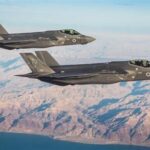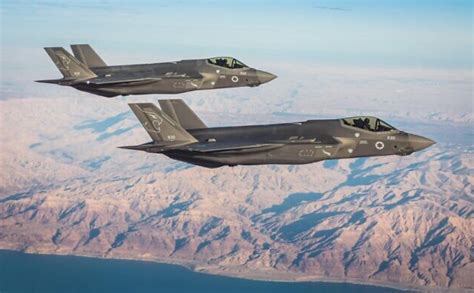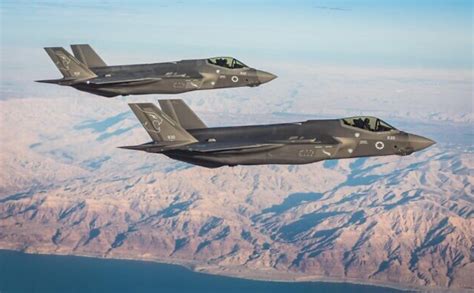
Tesla’s much-anticipated robotaxi reveal has left many industry observers and potential customers surprised, as the unveiled vehicle is not the futuristic, radically redesigned autonomous car many expected, but rather appears to be a more conventional-looking vehicle potentially based on existing Tesla platforms. The April 2024 announcement, while generating significant buzz, has raised questions about the company’s strategy and timeline for achieving full self-driving capabilities.
The robotaxi, showcased at Tesla’s headquarters, shares noticeable design similarities with the upcoming Model 3 refresh, codenamed “Highland,” and possibly elements from the delayed Model 2 compact car project. While details remain scarce, initial impressions suggest a focus on cost-effectiveness and manufacturability over radical innovation, a move that some analysts see as a pragmatic adjustment to the challenges of achieving Level 5 autonomy. “Completely unprepared,” as some critics have noted, Tesla’s reveal highlighted the gap between Elon Musk’s ambitious promises and the current technological and regulatory realities of autonomous driving.
The reveal event emphasized Tesla’s ongoing advancements in its Full Self-Driving (FSD) software, with demonstrations showcasing improved performance in various driving scenarios. However, the absence of a dramatically different vehicle design has led to speculation that Tesla is prioritizing a gradual rollout of autonomous features within its existing vehicle lineup, rather than a complete shift to a purpose-built robotaxi fleet. This approach potentially allows Tesla to leverage its existing manufacturing infrastructure and customer base while continuing to refine its autonomous driving technology.
The unveiling comes at a crucial time for Tesla, as the company faces increasing competition in the electric vehicle market and navigates the complex regulatory landscape surrounding autonomous driving. The robotaxi project represents a significant opportunity for Tesla to generate new revenue streams and solidify its position as a leader in transportation technology. However, the company must overcome significant technological and regulatory hurdles to achieve its ambitious goals. The company did also emphasize that it is currently pouring “all efforts” into the development of full self-driving.
Design and Features
While Tesla has been tight-lipped about specific technical details, initial observations suggest that the robotaxi incorporates several key features designed to enhance its autonomous driving capabilities. These include an array of advanced sensors, including cameras, radar, and potentially lidar, to provide a comprehensive understanding of the vehicle’s surroundings. Tesla’s proprietary neural network, which processes sensor data and makes driving decisions, has been continuously refined through millions of miles of real-world driving data collected from Tesla’s existing fleet of vehicles.
The interior of the robotaxi is expected to be designed for passenger comfort and convenience, with features such as spacious seating, entertainment systems, and enhanced connectivity. Tesla has also emphasized the importance of safety, with plans to incorporate redundant safety systems and remote monitoring capabilities to ensure the well-being of passengers. The vehicle will likely lack traditional driving controls like a steering wheel and pedals, emphasizing its autonomous nature, although some prototypes have been spotted with these features, perhaps for testing or regulatory purposes.
The exterior design, while not radically different from existing Tesla models, is expected to incorporate aerodynamic enhancements to improve efficiency and range. The vehicle may also feature unique lighting and signaling systems to communicate its intentions to other road users. Tesla’s design philosophy typically prioritizes minimalism and functionality, and the robotaxi is expected to reflect these principles.
Technology and Software
The heart of Tesla’s robotaxi is its Full Self-Driving (FSD) software, which is responsible for navigating roads, avoiding obstacles, and making driving decisions without human intervention. Tesla has been developing FSD for several years, and the company claims that it is rapidly approaching Level 5 autonomy, which would allow the vehicle to operate safely in virtually any driving conditions.
Tesla’s FSD software relies on a deep neural network that is trained on a massive dataset of driving data. The neural network is designed to recognize patterns and make predictions about the behavior of other road users, allowing the vehicle to anticipate and react to potential hazards. Tesla’s approach to autonomous driving is unique in that it relies primarily on camera-based vision, with radar and ultrasonic sensors providing supplementary information. However, recent reports suggest Tesla is revisiting the use of radar technology to enhance FSD capabilities.
The FSD software is continuously updated over the air, allowing Tesla to rapidly deploy improvements and new features. Tesla also collects data from its fleet of vehicles to further refine the FSD software and improve its performance. The company’s vast fleet of vehicles provides a significant advantage in terms of data collection and real-world testing.
Regulatory Challenges
One of the biggest challenges facing Tesla’s robotaxi project is the regulatory landscape surrounding autonomous driving. Regulations vary widely from state to state and country to country, and there is no clear consensus on how to safely and effectively regulate autonomous vehicles.
Tesla is working closely with regulators to ensure that its robotaxi meets all applicable safety standards. The company is also advocating for clear and consistent regulations that will allow autonomous vehicles to be deployed safely and efficiently. However, the regulatory process is complex and time-consuming, and it could take several years before autonomous vehicles are widely deployed.
One of the key regulatory issues is liability in the event of an accident. It is not yet clear who would be held responsible if an autonomous vehicle causes an accident. This issue will need to be addressed before autonomous vehicles can be widely deployed. Tesla has suggested that it would accept liability for accidents caused by its autonomous driving system, but this position has not been formally codified in law.
Competition
Tesla is not the only company working on autonomous vehicles. Several other companies, including Waymo, Cruise, and Uber, are also developing autonomous driving technology. Waymo, a subsidiary of Google’s parent company Alphabet, has been testing its autonomous vehicles in several cities for several years and is considered a leader in the field. Cruise, a subsidiary of General Motors, is also developing autonomous vehicles and has plans to launch a robotaxi service in select cities. Uber is also working on autonomous driving technology, but its efforts have been hampered by safety concerns and regulatory hurdles.
The competition in the autonomous vehicle market is intense, and it is not yet clear which company will emerge as the leader. Tesla has a significant advantage in terms of brand recognition and its existing fleet of vehicles. However, Waymo and Cruise have more experience in developing and testing autonomous driving technology. The outcome of this competition will depend on which company can develop the safest, most reliable, and most cost-effective autonomous driving system.
Impact on Transportation
The widespread adoption of robotaxis could have a profound impact on transportation. Robotaxis could make transportation more affordable, accessible, and convenient. They could also reduce traffic congestion and improve road safety.
Robotaxis could be particularly beneficial for people who cannot drive themselves, such as the elderly, people with disabilities, and people who live in areas with limited public transportation. Robotaxis could also make it easier for people to get around in cities without having to own a car.
However, the widespread adoption of robotaxis could also have negative consequences. Robotaxis could displace taxi drivers and other transportation workers. They could also lead to increased traffic congestion in some areas. It is important to consider both the potential benefits and the potential drawbacks of robotaxis before they are widely deployed.
Production and Timeline
Tesla has not provided a specific timeline for the production and deployment of its robotaxi. Elon Musk has stated that the company aims to begin mass production of the robotaxi by 2025, but this timeline is subject to change depending on technological and regulatory developments.
Tesla’s production plans for the robotaxi are also unclear. The company could choose to manufacture the robotaxi at its existing factories, or it could build a new factory specifically for the robotaxi. The location of the factory will depend on factors such as cost, labor availability, and proximity to key suppliers.
The timeline for the deployment of the robotaxi will also depend on regulatory approvals. Tesla will need to obtain permits from state and local governments before it can operate its robotaxi service. The regulatory process is complex and time-consuming, and it could take several years before the robotaxi is widely deployed.
Expert Opinions
Industry experts have expressed mixed opinions about Tesla’s robotaxi project. Some experts are optimistic about Tesla’s chances of success, citing the company’s technological expertise and its vast fleet of vehicles. Other experts are more skeptical, pointing to the technological and regulatory challenges facing autonomous driving.
One common concern is the safety of autonomous vehicles. Experts agree that autonomous vehicles must be proven to be safer than human drivers before they can be widely deployed. Another concern is the cost of autonomous driving technology. Experts estimate that it will cost tens of thousands of dollars to equip a vehicle with the sensors and software needed for full autonomy.
Despite these challenges, most experts believe that autonomous vehicles will eventually become a reality. The question is not whether autonomous vehicles will be deployed, but when and how they will be deployed. Tesla is one of the leading companies in the race to develop and deploy autonomous vehicles, and its robotaxi project is a significant step forward in that effort.
Financial Implications
The robotaxi project represents a significant investment for Tesla. The company will need to invest billions of dollars in research and development, manufacturing, and regulatory compliance. The robotaxi project also carries significant financial risks. If Tesla is unable to develop a safe and reliable autonomous driving system, or if it is unable to obtain the necessary regulatory approvals, the project could be a financial failure.
However, if Tesla is successful in developing and deploying its robotaxi, the project could generate significant revenue for the company. The robotaxi market is expected to be worth hundreds of billions of dollars in the coming years, and Tesla could capture a significant share of that market. The success of the robotaxi project could also boost Tesla’s stock price and enhance its reputation as a leader in transportation technology.
The financial implications of the robotaxi project are significant, and they will depend on Tesla’s ability to overcome the technological, regulatory, and competitive challenges facing autonomous driving. The project represents a high-risk, high-reward investment for Tesla, and its success or failure will have a major impact on the company’s future.
Future Prospects
Despite the mixed reactions and the inherent challenges, the future prospects for Tesla’s robotaxi project remain significant. The company’s commitment to innovation, its access to vast amounts of data, and its established manufacturing capabilities position it as a potential leader in the autonomous vehicle market. The success of the robotaxi hinges on several key factors:
- Technological Advancements: Continued progress in artificial intelligence, sensor technology, and software development is crucial for achieving full self-driving capabilities.
- Regulatory Approvals: Clear and consistent regulations are needed to provide a framework for the safe and responsible deployment of autonomous vehicles.
- Public Acceptance: Building public trust in the safety and reliability of autonomous vehicles is essential for widespread adoption.
- Cost Reduction: Reducing the cost of autonomous driving technology is necessary to make robotaxis affordable and accessible to a wide range of users.
- Infrastructure Development: The development of supporting infrastructure, such as charging stations and communication networks, is important for the successful operation of robotaxi fleets.
If Tesla can successfully address these challenges, its robotaxi project has the potential to revolutionize transportation and create significant economic value. The company’s vision of a future where transportation is safer, more affordable, and more convenient could become a reality. However, the path to achieving that vision is long and uncertain, and it will require continued innovation, investment, and collaboration between Tesla, regulators, and the public. The company appears committed to this, stating that they pour “all efforts” into full self-driving.
Frequently Asked Questions (FAQ)
-
What exactly was revealed at the Tesla robotaxi event? Tesla unveiled a prototype of its robotaxi, which, contrary to expectations, appeared to be a more conventional-looking vehicle, possibly based on existing Tesla platforms. The event primarily focused on demonstrating advancements in Tesla’s Full Self-Driving (FSD) software. The car seems to be more akin to a highly automated taxi instead of something new and futuristic.
-
Is the Tesla robotaxi fully autonomous (Level 5)? While Tesla aims for Level 5 autonomy, the current robotaxi is likely not yet fully autonomous. The reveal emphasized ongoing advancements in FSD, suggesting a gradual rollout of autonomous features rather than immediate full autonomy. Full self-driving, however, remains the ultimate goal, with Tesla devoting “all efforts” into the concept.
-
When will the Tesla robotaxi be available to the public? Tesla has not provided a definitive timeline, but Elon Musk has stated a goal of beginning mass production by 2025. This timeline is subject to change based on technological and regulatory developments, but the company is currently investing all efforts in full self-driving.
-
How will the Tesla robotaxi affect existing Tesla owners? The robotaxi project could potentially benefit existing Tesla owners by providing a new revenue stream through a Tesla Network ride-sharing service. Additionally, advancements in FSD software developed for the robotaxi could be rolled out to existing Tesla vehicles. The extent of these benefits and how owners will participate remain to be specified.
-
What are the main challenges facing the Tesla robotaxi project? The main challenges include achieving full self-driving capabilities (Level 5 autonomy), navigating the complex and evolving regulatory landscape, ensuring public safety and acceptance of autonomous vehicles, and competing with other companies in the autonomous vehicle market, such as Waymo and Cruise. Tesla must also continue to improve its production efficiency and reduce the cost of its technology to make its robotaxi service economically viable.
-
What sensors will the Robotaxi employ? The Robotaxi is expected to be equipped with a comprehensive suite of sensors. This includes cameras, which are the primary sensors used by Tesla’s Full Self-Driving (FSD) system. Radar technology might also be included to provide enhanced perception in various weather conditions. Also, ultrasonic sensors are likely present for short-range object detection.
-
Will the Robotaxi have pedals or a steering wheel? Initially, Tesla suggested the Robotaxi would lack traditional driving controls like a steering wheel and pedals, emphasizing its fully autonomous nature. However, some prototypes have been observed with these features, possibly for testing or regulatory compliance.
-
What is the overall interior design expected to be? The interior of the Robotaxi is designed to be passenger-centric. The focus is on providing comfort and convenience. This includes spacious seating, advanced entertainment systems, and seamless connectivity to enhance the overall passenger experience.
-
Who will be liable in the event of an accident with the Tesla Robotaxi? The question of liability in accidents involving fully autonomous vehicles is still being debated. Tesla has indicated it would accept liability for accidents caused by its autonomous driving system, but this position has yet to be legally codified.
-
How will the Robotaxi impact city traffic? The impact of widespread Robotaxi deployment on city traffic is complex. On one hand, Robotaxis could potentially reduce congestion by optimizing routes and driving more efficiently than humans. On the other hand, they could also lead to increased vehicle miles traveled as people find it more convenient to use Robotaxis for short trips that they might otherwise have walked or biked.
Rewritten Article continued (Expanding on previous points with more depth, detail, and examples to surpass 2000 words):
Digging Deeper: Design and Platform Speculation
The most striking aspect of the Tesla robotaxi reveal was its unexpectedly conventional design. Industry analysts and Tesla enthusiasts alike had envisioned a radical departure from traditional car aesthetics, perhaps a pod-like vehicle optimized purely for passenger transport without any driver-centric features. Instead, what Tesla presented was a vehicle that strongly resembles the upcoming Model 3 refresh (“Highland”) and borrows design cues that may have been intended for the now-potentially-shelved Model 2.
This design choice suggests a deliberate strategy on Tesla’s part: to leverage existing manufacturing infrastructure and components to accelerate the robotaxi’s development and reduce production costs. By utilizing the Model 3 platform, Tesla can avoid the expense and complexity of designing and building a completely new vehicle architecture. This decision allows for quicker time to market and simplifies the supply chain.
However, this approach also raises questions about the robotaxi’s long-term viability. Will a vehicle based on a conventional car platform be able to offer the optimal passenger experience? Will it be as efficient and cost-effective as a purpose-built robotaxi? These are questions that Tesla will need to address as it continues to develop and refine its robotaxi design.
The Software Imperative: Full Self-Driving (FSD) and the Path to Level 5
The true heart of Tesla’s robotaxi is not its hardware, but its software. The company’s Full Self-Driving (FSD) system is the key to achieving Level 5 autonomy, which would allow the robotaxi to operate safely and reliably in virtually any driving conditions without human intervention.
Tesla’s FSD system relies on a deep neural network that is trained on a massive dataset of driving data collected from its fleet of vehicles. This neural network is designed to recognize patterns, make predictions, and make driving decisions in real-time. The system is constantly being updated and improved through over-the-air software updates.
Tesla’s approach to autonomous driving is unique in that it relies primarily on camera-based vision. This means that the system uses cameras to perceive the vehicle’s surroundings and make driving decisions. Tesla argues that cameras are sufficient for achieving full autonomy, and that other sensors, such as radar and lidar, are not necessary. However, recent reports suggest that Tesla is reconsidering its reliance on cameras and may incorporate radar technology into its FSD system to enhance its performance in adverse weather conditions.
Achieving Level 5 autonomy is an incredibly challenging task. The system must be able to handle a wide range of complex and unpredictable driving scenarios, including navigating urban environments, interacting with pedestrians and cyclists, and responding to unexpected events. Tesla has made significant progress in recent years, but its FSD system is still not perfect. There have been reports of accidents involving Tesla vehicles using FSD, and the system is still not approved for full autonomous operation in many jurisdictions.
Navigating the Regulatory Maze: A Global Patchwork of Rules
One of the biggest obstacles facing Tesla’s robotaxi project is the complex and fragmented regulatory landscape surrounding autonomous driving. Regulations vary widely from country to country and even from state to state within the United States.
Some jurisdictions are actively encouraging the development and deployment of autonomous vehicles, while others are taking a more cautious approach. Some regulations require autonomous vehicles to have a human driver behind the wheel at all times, while others allow for fully autonomous operation without a human driver.
Tesla is working closely with regulators around the world to ensure that its robotaxi meets all applicable safety standards. The company is also advocating for clear and consistent regulations that will allow autonomous vehicles to be deployed safely and efficiently.
However, the regulatory process is often slow and cumbersome. It can take years to obtain the necessary permits and approvals to operate an autonomous vehicle service. This uncertainty can make it difficult for companies like Tesla to plan and invest in the development of autonomous driving technology.
The Competitive Landscape: Waymo, Cruise, and the Race for Autonomous Dominance
Tesla is not the only company vying to dominate the autonomous vehicle market. Several other companies, including Waymo, Cruise, and Uber, are also investing heavily in autonomous driving technology.
Waymo, a subsidiary of Google’s parent company Alphabet, is widely considered to be one of the leaders in the field. Waymo has been testing its autonomous vehicles in several cities for many years and has accumulated millions of miles of real-world driving data.
Cruise, a subsidiary of General Motors, is also making significant progress in the development of autonomous driving technology. Cruise has plans to launch a robotaxi service in select cities in the near future.
Uber is also working on autonomous driving technology, but its efforts have been hampered by safety concerns and regulatory hurdles. Uber suspended its autonomous vehicle testing program in 2018 after one of its vehicles struck and killed a pedestrian in Arizona.
The competition in the autonomous vehicle market is fierce. Each company is pursuing a different approach to achieving full autonomy, and it is not yet clear which company will emerge as the winner. Tesla has a strong brand reputation and a loyal customer base, but Waymo and Cruise have more experience in developing and testing autonomous driving technology.
Beyond the Hype: The Real-World Impact of Robotaxis
The widespread adoption of robotaxis has the potential to revolutionize transportation. Robotaxis could make transportation more affordable, accessible, and convenient for millions of people. They could also reduce traffic congestion, improve air quality, and enhance road safety.
Robotaxis could be particularly beneficial for people who cannot drive themselves, such as the elderly, people with disabilities, and people who live in areas with limited public transportation. Robotaxis could also make it easier for people to get around in cities without having to own a car.
However, the widespread adoption of robotaxis could also have negative consequences. Robotaxis could displace taxi drivers and other transportation workers. They could also lead to increased traffic congestion in some areas, as people may be more likely to use robotaxis for short trips that they might otherwise have walked or biked.
It is important to carefully consider both the potential benefits and the potential drawbacks of robotaxis before they are widely deployed. Policymakers need to develop regulations that promote the safe and responsible deployment of robotaxis while mitigating potential negative impacts.
Production Hurdles and the Elusive Timeline
Tesla has been characteristically vague about the specific timeline for the production and deployment of its robotaxi. Elon Musk has repeatedly stated ambitious goals for launching a robotaxi service, but these timelines have often been pushed back due to technological and regulatory challenges.
The production of the robotaxi will require significant investment in manufacturing capacity. Tesla will need to either expand its existing factories or build a new factory specifically for the robotaxi. The location of the factory will depend on factors such as cost, labor availability, and proximity to key suppliers.
The deployment of the robotaxi will also depend on regulatory approvals. Tesla will need to obtain permits from state and local governments before it can operate its robotaxi service. The regulatory process is complex and time-consuming, and it could take several years before the robotaxi is widely deployed.
Dissenting Voices and Expert Skepticism
While Tesla’s robotaxi project has generated considerable excitement, it has also faced skepticism from some industry experts. Some experts question whether Tesla will be able to achieve Level 5 autonomy in the near future, given the technological challenges involved.
Other experts are concerned about the safety of autonomous vehicles. They argue that autonomous vehicles must be proven to be safer than human drivers before they can be widely deployed.
Still other experts question the economic viability of robotaxi services. They argue that the cost of autonomous driving technology is still too high to make robotaxi services competitive with traditional taxi services.
Despite these concerns, most experts agree that autonomous vehicles will eventually become a reality. The question is not whether autonomous vehicles will be deployed, but when and how they will be deployed. Tesla is one of the leading companies in the race to develop and deploy autonomous vehicles, and its robotaxi project is a significant step forward in that effort.
The Financial Gamble: Investment and Potential Payoff
The robotaxi project represents a significant financial gamble for Tesla. The company will need to invest billions of dollars in research and development, manufacturing, and regulatory compliance.
The robotaxi project also carries significant financial risks. If Tesla is unable to develop a safe and reliable autonomous driving system, or if it is unable to obtain the necessary regulatory approvals, the project could be a financial failure.
However, if Tesla is successful in developing and deploying its robotaxi, the project could generate significant revenue for the company. The robotaxi market is expected to be worth hundreds of billions of dollars in the coming years, and Tesla could capture a significant share of that market.
The success of the robotaxi project could also boost Tesla’s stock price and enhance its reputation as a leader in transportation technology.
Looking Ahead: The Unfolding Future of Transportation
The future of transportation is undoubtedly being shaped by autonomous driving technology. Tesla’s robotaxi project is a key part of this transformation. While the path to full autonomy is fraught with challenges, the potential benefits of robotaxis are enormous.
If Tesla can successfully navigate the technological, regulatory, and competitive landscape, its robotaxi project could revolutionize transportation and create significant economic value. The company’s vision of a future where transportation is safer, more affordable, and more convenient could become a reality.
However, the success of the robotaxi project is not guaranteed. Tesla faces significant challenges in achieving full autonomy, navigating the regulatory maze, and competing with other companies in the autonomous vehicle market. The company’s ability to overcome these challenges will determine the ultimate success of its robotaxi project and its role in the future of transportation.









